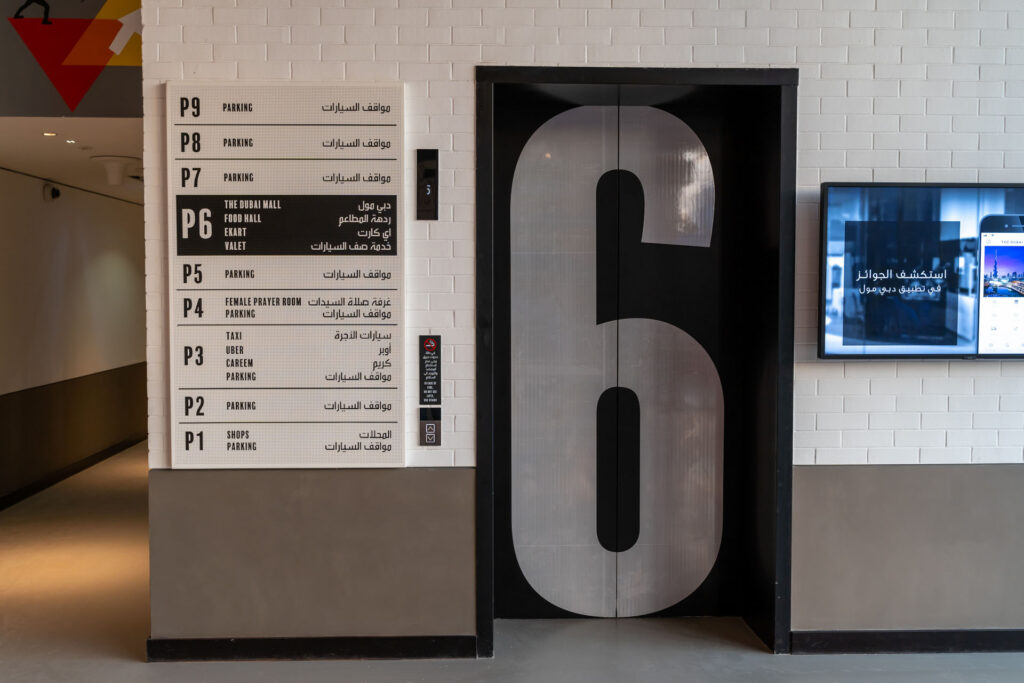Imagine building a massive mixed-use destination that ticks all the boxes when it comes to its architectural details and aesthetic internal touches. But once it is opened for business, how do you ensure that visitors will be able to flow through its many levels, corridors and connecting pathways? Just putting up exit and entrance signs will not do, nor will arrow signs. That’s where specialist signage and wayfinding specialists come in.
“In a mall or airport, the most critical thing wayfinding does is manage the flow of consumer, consider the main congestion points and all aspects of the development,” said Graeme Erens, CEO of Genius Loci, which has partaken in projects such as the Dubai Opera House and Legoland Dubai Parks and Resorts. “Even down to how the deliveries are done and how access for emergency vehicles can be managed. “But with residential towers, wayfinding is more a pragmatic exercise, with very specific design solutions for each of the areas.
Essentially, one needs to be able to tell which floor to go to and where to go in case of an emergency. “There are often degrees of cost consideration. In mixed-use communities, you need wayfinding to connect the entire development. Each area requires that … but the challenge is to do that looking relevant to the space.”
Not that wayfinding is a brand new science. It has been around awhile, most spectacularly in the way the these showed up in the colour coding at the New York subway back in the 1960s. Elements have been there in all of the destinations that Dubai has created over the years. But, now, it is as close to being an exact science as can be. And that means calling in the consultancies right at the point when masterplans are being finalised. “If you take the way a development’s designed, there are often areas within that become iconic,” said Erens. “It could be a courtyard with a fountain, a walkway along a river or a plaza. Those components sort of become the recognisable areas within the development that people see as destinations within. “Wayfinding guides them within and around those areas from point to point. You are not telling people to go from here to there … but go on a journey and experience the space you are in to get to where you want to go. It’s informing the consumer what the great experiences are.”
The signage needs to be one with its environment. It wouldn’t cut much ice if the design comes off as too modern in a themed setting where the emphasis is on the vintage. “It should be a functional piece of communication that looks like it belongs to the environment,” the CEO said. “This where the fun part starts. “What we end up designing is not something purely functional or contemporary looking, it is manipulative material, it is theming that looks at the history of the space and the influence of the design. It’s very linked to the interior design, the landscape and architecture.”
Wayfinding designs are a horses for courses strategy With retail spaces, these elements need to be bigger, clearer, colour coded and more activity-based. “It’s a system of understanding how people make assumptions when moving around a space,” said Graeme Erens of Genius Loci. “What we do is manage the sequence of information to get to a destination.” For themed resorts and boutique hotels, what wayfinding does is add to the visual experience of the space. The theming adds to the believability. “Any themed environment is an artificial experience,” said Erens. “You go into that space to be convinced that it looks like what the theme promises.”


